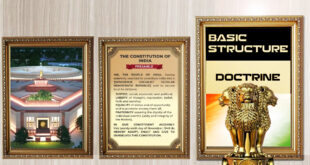After remaining in suspended animation for five months, the Jammu and Kashmir Assembly was dissolved by Governor Satya Pal Malik last month. After the November-December 2014 elections to the State Assembly, which produced a fractured mandate, J&K had several years of a Peoples Democratic Party-BJP coalition government, interspersed with a spell of Governor’s rule. In June 2018, the BJP pulled out of this alliance. In November, when the PDP, the Congress and the National Conference had almost reached an understanding to form a government, the Governor decided to dissolve the Assembly. Four years of mismanaged politics have plunged J&K into its worst ever cycle of violence and confusion. Kashmir today is not merely volatile, but is drifting inexorably into anarchy. Violence is the dominant factor. The numbers of militants and security personnel killed dominate newspaper headlines. Over the past three years, South Kashmir had been the main epicentre of violence, but more recently, North and Central Kashmir have also emerged as violence prone. This year has witnessed some of the highest levels of violence since 1989. Areas such as Srinagar which had previously been declared a ‘militancy free zone’ have again witnessed a series of militant attacks. Growing divide In addition to escalating violence, a distinct feature of the situation in Kashmir today is the divide between the administration and the populace, which is possibly at its widest today. The turnout in local body elections in urban areas dropped is a negligible percentage. Retrieving the situation in J&K would thus prove extremely difficult. J&K appears to be at a tipping point and needs to be handled with extreme care. A series of miscalculations by governments in both J&K and at the Centre have led to the present impasse. The first was Mufti Mohammad Sayeed’s belief that his brand of ‘sleight-of-hand’ politics (which he used to practise with the Congress) could be replicated with the BJP, and hope thereby to sustain his legacy as a consummate politician. The hope, however, proved short-lived. After his death in January 2016, daughter Mehbooba Mufti had to be persuaded to continue with the arrangement, but increasing levels of violence after her takeover witnessed the coalition partners viewing the situation from very different angles. In the wake of the growing political dissonance, other miscalculations have also occurred. One was a misplaced belief in the virtues of an ‘unilateral ceasefire’ during Ramzan 2018, replicating the Ramzan ceasefire during the period of former Prime Minister Atal Bihari Vajpayee. Atavistic reasoning is, however, no substitute for a carefully constructed and calibrated ceasefire. Militants used the ceasefire to regroup, just when the security forces seemed to gain the upper hand. Pakistan also acted as a spoiler, carrying out a series of border attacks during this same period. Compounding this situation was the controversy generated over Article 35A of the Constitution, accompanied by demands that it should be revoked. It led to widespread apprehension that the Centre was trying to undermine the special concessions granted to J&K which were embedded in the Constitution. A crisis of confidence in Delhi’s intentions followed, precisely when the State was reeling under a wave of militant protests. The gravest miscalculation arose on how best to deal with the rising crescendo of violence engulfing the Valley. Absence of political guidance, belief in the virtues of a ‘muscular policy’ to stamp out militancy, eschewing of all softer options, and an irrevocable breakdown in communications led to a widening chasm between the people of Kashmir and the administration. Once the PDP-BJP coalition collapsed under the weight of its inherent contradictions, reintroduction of Governor’s rule (that is, rule by the Centre) turned out to be a case of the remedy being worse than the disease.
Check Also
Joint Parliamentary Committees (JPCs): Scrutinizing the Executive
Introduction In a parliamentary democracy, ensuring accountability of the executive is paramount. Joint Parliamentary Committees …
 Chinmaya IAS Academy – Current Affairs Chinmaya IAS Academy – Current Affairs
Chinmaya IAS Academy – Current Affairs Chinmaya IAS Academy – Current Affairs



